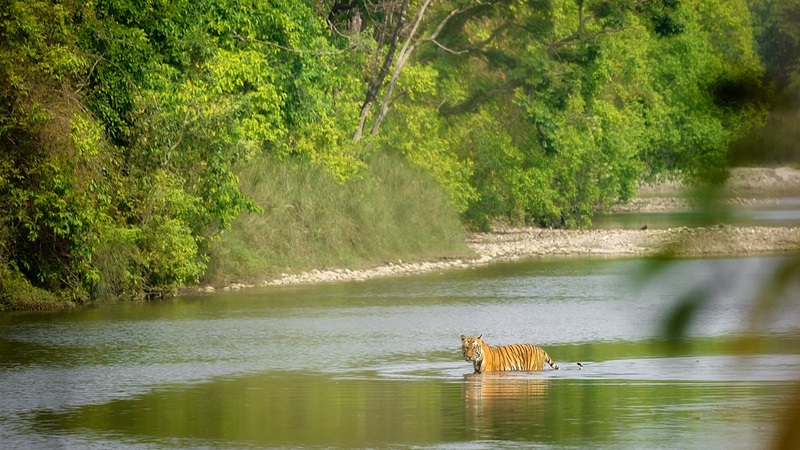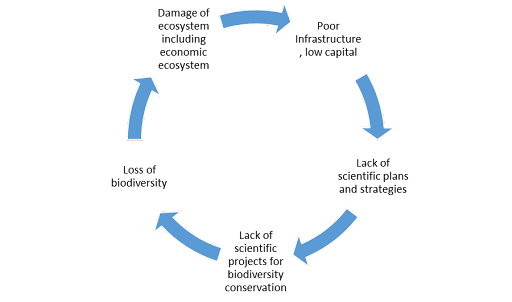
Sitaram Dahal
A Vicious Circle of Loss of Biodiversity in Underdeveloped Countries
Most Read Stories Today
-
Water Scarcity and Artificial Rainfall: The Positive and The Negative Effects of Cloud Seeding, including Health Hazards and Climate Implications.
-
Renewable Energy in Rural Areas: Challenges, Opportunities, and Successful Rural Projects
-
Pakistan's Agriculture at Risk Due to Climate Variability
-
South Africa's Recent Floods: Is Climate Change to Blame?
-
South Korea's floods: root causes and prevention strategies.
-
South Africa: Cape Town, A City Under Fire
-
The Human Cost of Climate Disasters
-
Our Oceans, Our Future: The South African Dilemma of Overfishing
-
Degenerative Impact of Hydrocarbons On The Environment.
-
Sustainable Urban Planning - Copenhagen and the Path to Climate Resilience
The diverse species we are fortunate to witness will not be available for the generations to come to live with. A balance given by a small unicellular organism to the global ecosystem is more pivotal than one can imagine.
However, humans do not seem to be serious and ready to share this earth with other species without knowing that humans are on the earth because of the other species.
The rate of extinction of different living beings is unprecedentedly higher than ever, as United Nations Framework Convention on Climate Change (UNFCCC) shares an alarming projection of the extinction of one-third of Earth’s living animal and plant species by 2050 if current Greenhouse gas emission trajectories continue. Nepal, a small landlocked country between India and China, is a country full of diversity, be it geographical or ethnic, or biological diversity. Nepal’s biological diversity is a result of its diverse geography, wide altitudinal variations within short distances, and diverse climatic conditions.
Nepal Biodiversity Research and Conservation Centre state that Nepal ranks 49th in the global ranking in biodiversity abundance with more than 22,000 living species. Nepal is home to different rare and endangered species including the five most endangered species namely the One-horned Rhinoceros, Royal Bengal Tiger, Asian Elephant, Gharial, and Pangolin. It is also home to some native species which are found in Nepal only like Spiny Babbler. Biodiversity has been a boon to Nepal as it has had multiplier impacts on Nepal’s economy and society. The prevalent biodiversity has added value to the serene landscapes Nepal has and it is also the reason behind one of the favorite tourism activities of Nepal: Wildlife Safari.
Further, the backbone of nature and the natural resources of Nepal is its biodiversity. From balancing ecosystems to tourism, and from being a source of natural resources to a source of livelihood for communities, biodiversity has other indirect contributions to Nepal’s economy and the livelihood of its people. Amidst all these glorified figures, Nepal has some figures to worry about. Nepal though, might not be a top contributor to GHG emissions, is one of the most vulnerable to its impacts due to natural reasons as well as artificial reasons as it has poor infrastructure, low capital, and poor preparedness. This has posed a serious threat to not only native species of Nepal but also species like migratory birds who choose Nepal as their habitat for a certain period of time.
The Kathmandu Post, a famous national daily of Nepal highlighted the case of the decrement of migratory birds in Jagadishpur wetland in geometric rate. The number decreased from 20,807 birds in 2020 to 9,487 in 2022. If this does not depict a serious trend then what will? To add to the misery, there is a serious threat of poaching of different wildlife. In the year 2023 only, two one-horned rhinos were killed by poachers in Nepal. Amidst different challenges Nepal needs to overcome towards conserving biodiversity, the scarcity of real-time data and the absence of scientifically made strategy is the main driver of the increasing loss of biodiversity.
Nepal National Biodiversity Strategy and Action Plan (2014-2020) which is the latest one, though indicates climate change as one of the major contributors to the increasing threat of biodiversity loss did not meet its target and the country is yet to make its follow-up scientific action plan. Therefore, real-time data and data-guided strategy and action plan is the urgent need for Nepal. Countries like Nepal are trapped in a vicious circle of loss of biodiversity due to its poor economy and lack of projects for climate action. It is high time to work on breaking this trap and ensure the conservation of habitats of different species so that generations to come can enjoy the balance the diverse species of flora and fauna create.

Figure of Vicious Circle of loss of biodiversity in LDCs like Nepal
Feature Image: Picture of Himalayan Peasant in Sagarmatha National Park (Pic by self)
Edited by: Muhammad Abdullahi Ibrahim

Terms & Conditions
Subscribe
Report
My comments